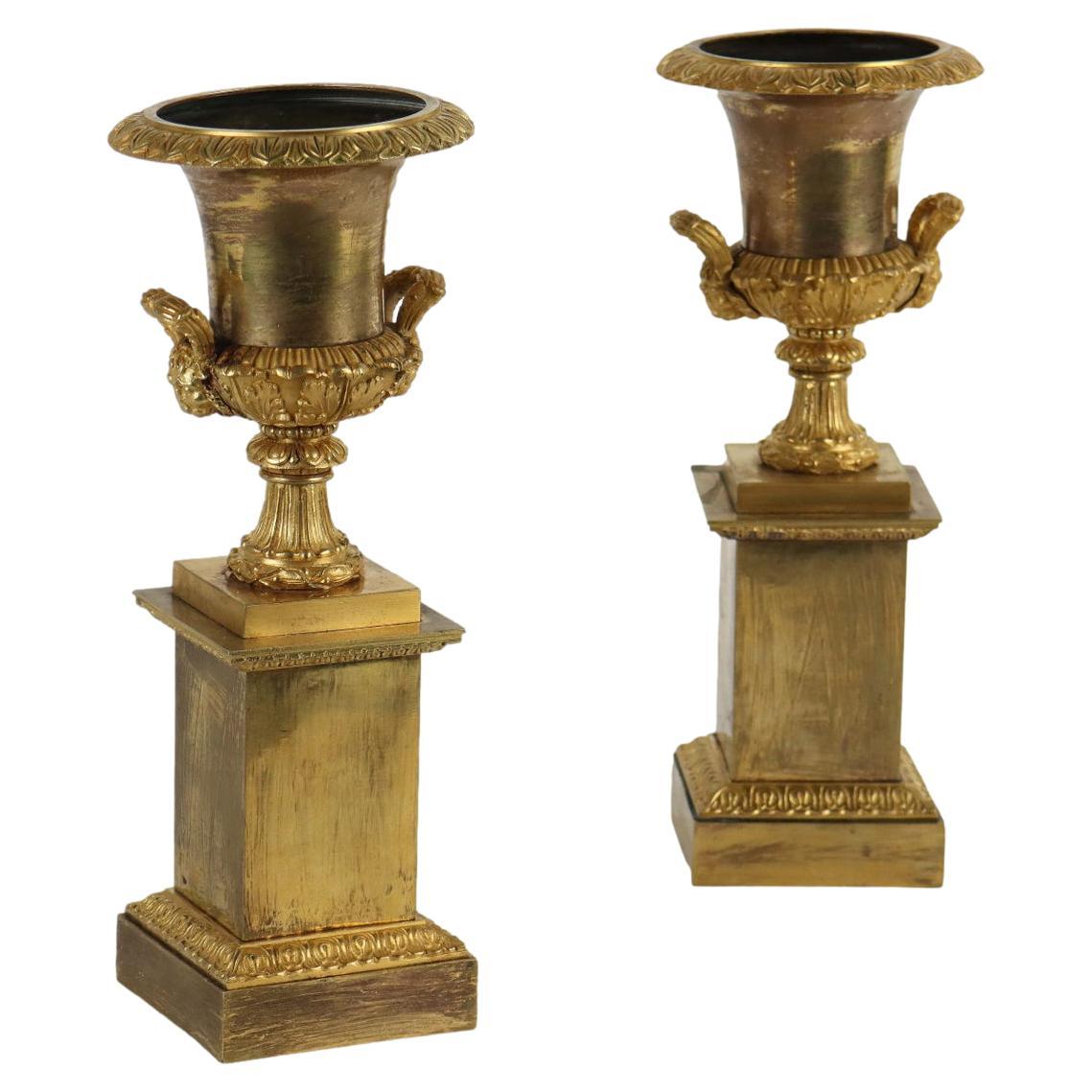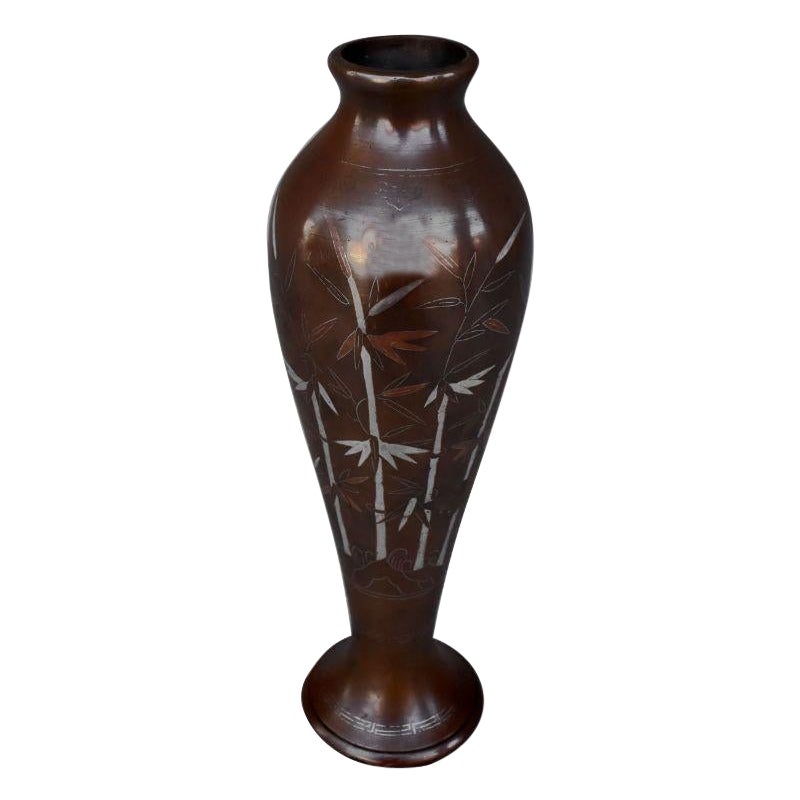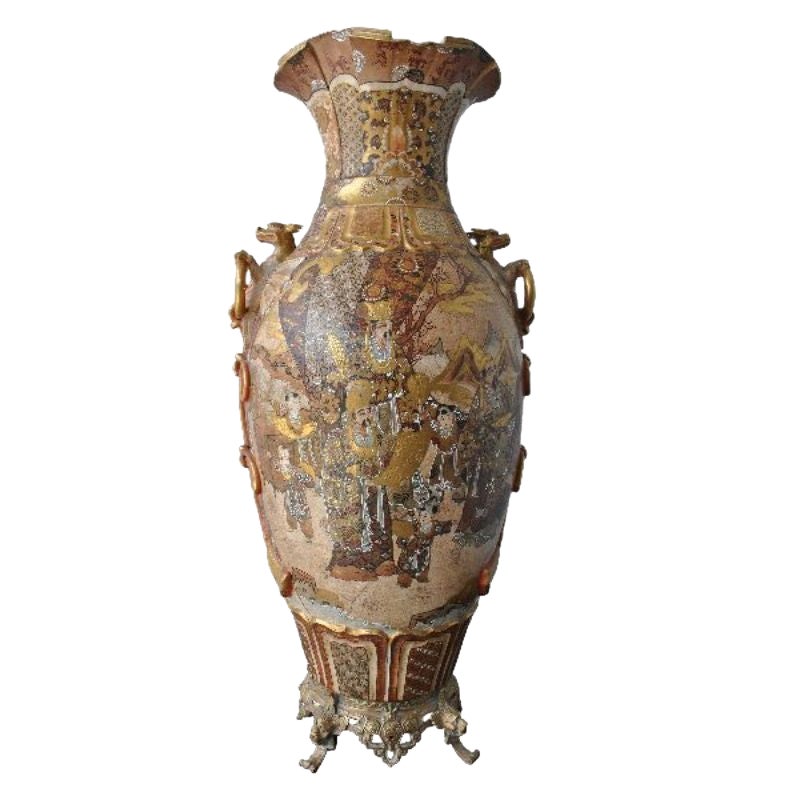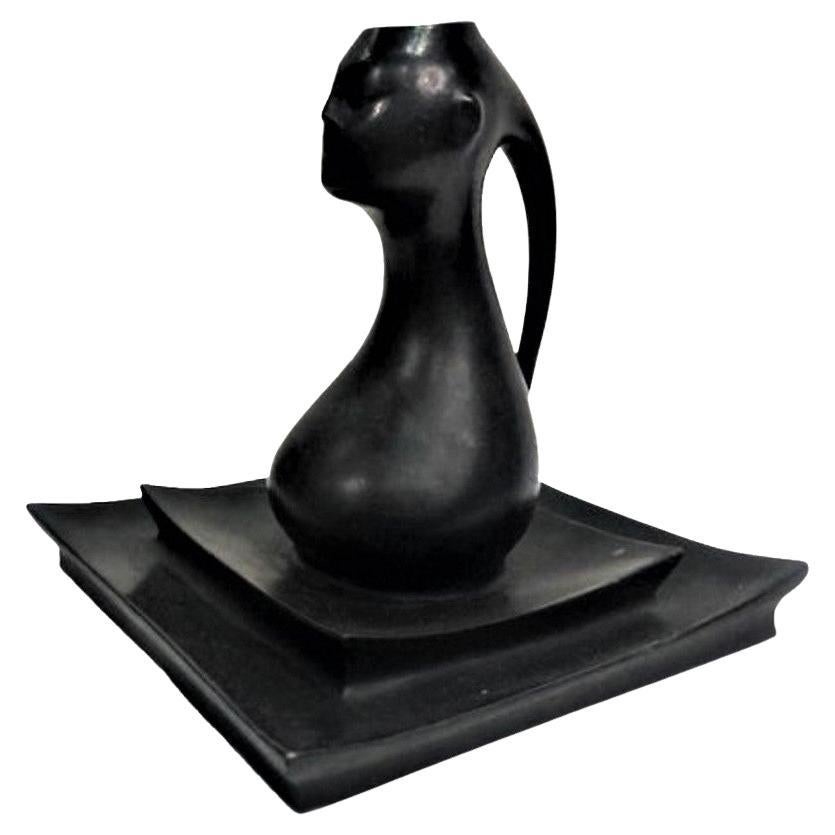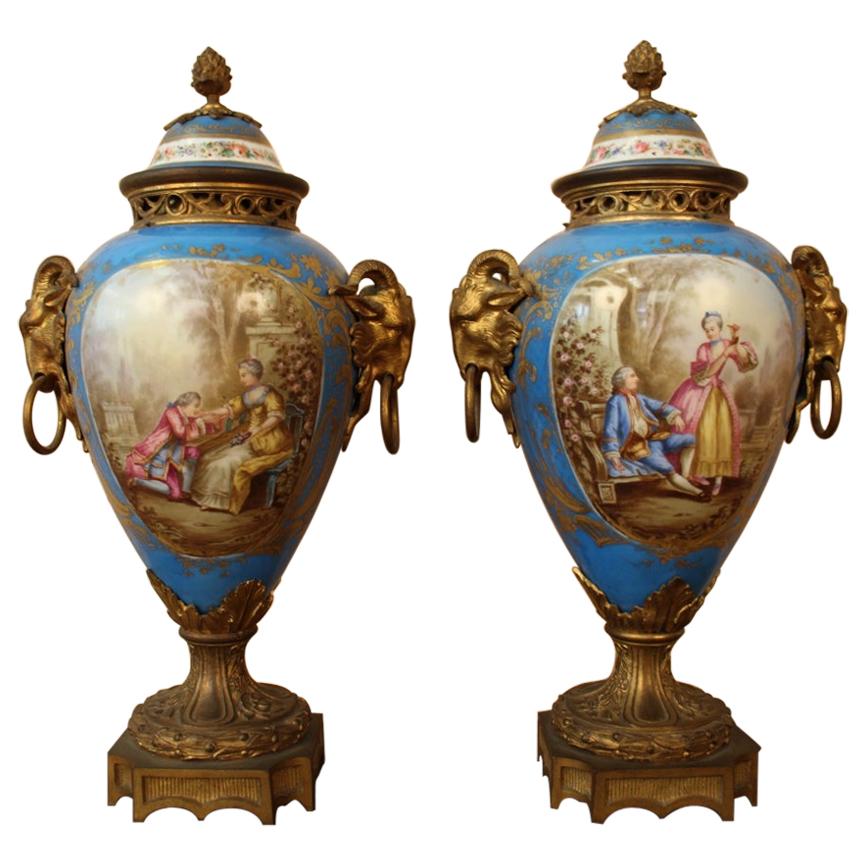Items Similar to Vase Mounted by a Viennese Bronze Bird, XIXth Century
Want more images or videos?
Request additional images or videos from the seller
1 of 5
Vase Mounted by a Viennese Bronze Bird, XIXth Century
About the Item
Glass vase mounted by a Vienna bronze representing a bird perched on a branch. XIXth century work. Dimensions height 22 cm. Unfortunately part of the glass rim is broken.
Additional information:
Material: Bronze.
- Dimensions:Height: 8.67 in (22 cm)Width: 2.37 in (6 cm)Depth: 2.37 in (6 cm)
- Materials and Techniques:
- Period:
- Date of Manufacture:Late 19th Century
- Condition:
- Seller Location:Marseille, FR
- Reference Number:
About the Seller
4.3
Vetted Seller
These experienced sellers undergo a comprehensive evaluation by our team of in-house experts.
Established in 1999
1stDibs seller since 2018
69 sales on 1stDibs
Typical response time: 12 hours
- ShippingRetrieving quote...Ships From: Marseille, France
- Return PolicyA return for this item may be initiated within 14 days of delivery.
More From This SellerView All
- Old Bronze Soliflore Vase Japan, XIXthLocated in Marseille, FROld bronze soliflore vase decorated with foliage from Japan, late 19th century, height 24 cm. Additional information: Material: Bronze Dimension: 8...Category
Antique 19th Century Vases
MaterialsBronze
- Japanese Satsuma Vase, XIXth CenturyLocated in Marseille, FRLarge Japanese vase in Satsuma, 19th century, height 88 cm. For a diameter of 36 cm. Usual restoration. Additional information: Material: Earth...Category
Antique 19th Century Japanese Vases
MaterialsEarthenware
- Urn Painted in Satsuma, XIXth CenturyLocated in Marseille, FRSatsuma urn painted 19th century with a height of 30 cm and a width of 22 cm. Unfortunately there is a large crack on the base of the vase, it nevertheless...Category
Antique 19th Century Jars
MaterialsEarthenware
- Blind Love Bronze, XIXth CenturyLocated in Marseille, FRNineteenth-century bronze blind love symbolized by a cupid looking like a day blind man with a brown patina on a gilded bronze base. note a difference in patina between the upper par...Category
Antique 19th Century Figurative Sculptures
MaterialsBronze
- Archaic Chinese Bronze VaseLocated in Marseille, FRArchaic Chinese bronze vase decorated with elephant heads, work probably from the middle of the 19th century, unfortunately pierced in two places. Measur...Category
Antique 19th Century Vases
MaterialsBronze
- Pair of Chinese Vases Mounted as a 19th Century LampLocated in Marseille, FRPair of Chinese vase (Canton) mounted as a lamp (bronze base and neckline) from the 19th century, height 31 cm. Additional information: Material: Earthenware & Ceramics.Category
Antique 19th Century Chinese Vases
MaterialsEarthenware
You May Also Like
- Pair of Gilded Bronze Vases, XIXth CenturyLocated in Milano, ITPair of Medici vases in gilded and chiseled bronze with plinth base decorated with vegetable and Greek motifs. The two vases have two terminal han...Category
Antique 19th Century Italian Other Vases
MaterialsBronze
- Pair of Porcelain Vases Ormolu-Mounted in Lamps by Gagneau Paris XIXth CenturyBy Gagneau ParisLocated in Saint-Ouen, FRPair of large Japanese Porcelain Cone Shape Vases with Imari decoration Important mounts in ormolu and gilded metal, the base decorated with a laurel wreath, the upper part of falling leaves and a frieze of knotted ribbon. The mounts signed Gagneau, 115 R. Lafayette. Circa 1860 With their original aluminium bulb cover and original gilding Vase it self Height 47 cm The Gagneau Company is one of the most famous lighting factories in Paris in the nine-teenth century, established in 1800 at 25 rue d'Enghien in Paris and later at 115 rue de Lafayette. She has participated in many exhibitions throughout this century. She began in 1819 with the Exposition des Produits de l'Industrie and later participated in the Universal Exhibitions where she was part of the jury in the category of art bronzes (class 25) at the Universal Exhibition in Paris in 1889. "Imari" was simply the trans-shipment port for Arita wares, from where they went to the for-eign trading outposts at Nagasaki. It was the kilns at Arita which formed the heart of the Japanese porcelain industry. Arita's kilns were set up in the 17th century, after kaolin was discovered in 1616. A popular legend attributes the discovery to an immigrant Korean potter, Yi Sam-Pyeong (1579–1655), although most historians consider this doubtful. After the discovery, some kilns began to produce revised Korean-style blue and white porcelains, known as Early Imari, or "Shoki-Imari". In the mid-17th century, there were also many Chinese refugees in northern Kyushu due to the turmoil in China, and it is said that one of them brought the overglaze enamel coloring technique to Arita. Thus Shoki-Imari developed into Ko-Kutani, Imari, and later Kakiemon, which are sometimes taken as a wider group of Imari wares. Ko-Kutani was produced around 1650 for both export and domestic market.Kutani Ware is characterized by vivid green, blue, purple, yellow and red colors in bold designs of landscapes and nature. Blue and white porcelain pieces continued to be produced and they are called Ai-Kutani. Ko-Kutani Imari for the export market usually adopted Chinese design structure such as kraak style, whereas Ai-Kutani for the domestic market were highly unique in design and are ac-cordingly valued very much among collectors. Ko-Kutani style evolved into Kakiemon-style Imari, which was produced for about 50 years around 1700. Kakiemon was characterized by crisp lines, and bright blue, red and green designs of dramatically stylized floral and bird scenes. Imari achieved its technical and aes-thetic peak in the Kakiemon style, and it dominated the European market. Blue and white Kakiemon is called Ai-Kakiemon. The Kakiemon style transformed into Kinrande in the 18th century, using underglaze blue and overglaze red and gold enamels, and later additional colors. Imari began to be exported to Europe when the Chinese kilns at Jingdezhen were damaged in the political chaos and the new Qing dynasty government halted trade in 1656–1684. Ex-ports to Europe were made through the Dutch East India Company, and in Europe the des-ignation "Imari porcelain" connotes Arita wares of mostly Kinrande Imari. Export of Imari to Europe stopped in mid-18th century when China resumed export to Eu-rope, since Imari was not able to compete against Chinese products due to high labor costs. By that time, however, both Imari and Kakiemon styles were already so popular among Eu-ropeans that the Chinese export porcelain copied both, a type known as Chinese Imari. At the same time, European kilns, such as Meissen and English potteries such as Johnson Bros. and (Royal) Crown Derby, also imitated the Imari and Kakiemon styles. Export of Imari surged again in late 19th century (Meiji era) when Japonism flourished in Europe.Thus, in the western world today, two kinds of true Japanese Imari can...Category
Antique 1880s French Japonisme Table Lamps
MaterialsBronze
- Alfonso Canciani, Viennese Secession Orientalist Bronze Vase, c. 1910By Alfonso CancianiLocated in New York, NYAlfonso Canciani (Italian-Austrian, 1863-1955) was a famous Italian-Austrian sculptor of the period of accession to the Viennese Secession. Son of a stonemason, after a realist period he managed to establish himself as a leading sculptor of the Viennese Secession. In fact, he worked in Vienna, where he had enrolled in 1886 at the Academy of Fine Arts, then at the Higher School of Sculpture and finally at the Special School, where he obtained the Rome prize for the sketch for Dante's Monument. He developed a notable business obtaining important prizes and numerous commissions. First among the sculptors of the Viennese capital, he was invited to join the Association of the Viennese Secession, of which Klimt was magna pars, after the exhibition of Dante's group in 1900 at the Secession exhibition, and obtained the most important Austrian artistic prize, the Kunstlerlpreis. This same work, presented in 1910 in Berlin, at the Great Art Exhibition, also received an important recognition here. He obtained the Rome prize in 1896, exhibited successfully in Munich and in 1899 at the III International Art Exhibition in Venice. In that period he made some statues of saints for the cathedral of Santo Stefano in Vienna, the monument to Wagner, the bust of Nietzsche for the University, the scepter and the gold chain of the University Rector, figures of Italian poets ( Petrarch, Boccaccio, Tasso, Ariosto). He submitted a sketch for the official monument to Empress Elizabeth, which was then built in Austrisn Gföhl and Pula. At the time of his accession to the Secession, he dedicated himself to decorating the facade of the Artaria house in Vienna in collaboration with the architect Max Fabiani. He later abandoned the symbolist decorativism of the Jugendstil for a more concentrated and vigorous style, approaching the Belgian sculptor Constantin Meunier for the theme of work, and preferring to exhibit at the Künstlerhaus. In Vienna, he was generous with advice and help with the Italians and in particular with his fellow citizens (such as the Brazzanese Luigi Visintin, then a university student). After the First World War, he returned to Italy and lived in Friuli, penalized by the fact that the Habsburg Empire had by now disappeared. Instead of large-scale public monuments, he then devoted himself to engraving medals (e.g. for Benedict XV and for the Italian mission in Vienna in 1919) and to designing funeral monuments (examples in Mali Lošinj and Trieste) and portrait busts (of Generals Carlo Caneva and Antonio Baldissera in Udine, sculptures of the War Memorial of Corno di Rosazzo). After all, he had already executed the Bab grave monument in the Döblinger cemetery in Vienna in 1909. He taught in Trieste from 1920 until 1935, at the local school of industrial art, where he had Marcello Mascherini...Category
Vintage 1910s Austrian Jugendstil Vases
MaterialsBronze
- Pair of Sèvres Porcelain and Gilt Bronze Vases XIXthLocated in charmes, FRPair of Sèvres porcelain and gilt bronze vases from the XIXth century in very good condition, minimal wear to the gilding due to useCategory
Antique Late 19th Century French Vases
MaterialsCeramic
- Birds Porcelain Vase with BronzeLocated in Paris, FRVase birds porcelain with bronze all in hand painted porcelain and with bronze trim details up and down the vase.Category
21st Century and Contemporary Italian Vases
MaterialsBronze
- 19th Century Bronze Mounted Cut Crystal VaseLocated in Los Angeles, CACut crystal. Bronze mounted. Swan motif. Finely chased. Measure: Base is 3.5" by 3.5".Category
Antique 19th Century French Empire Vases
MaterialsCrystal, Bronze
Recently Viewed
View AllMore Ways To Browse
Bird Vase Bronze
Bronze Birds Vase
Bronze Vase And Bird
Broken Vase
Bird On Branch Vase
19th Century Vienna Vase
Vase Bronze Vienna
Vienna Bronze Bird
Vase China Dragon
Bronze Mounted Sevres
Chinese Vase Dragon
Retro Pink Glass Vase
Purple Italian Glass Vase
Pottery Large Pot
Bubble Green Glass
Bedroom Cloisonne Furniture
Tiffany Business
Murano Glass Colorful
